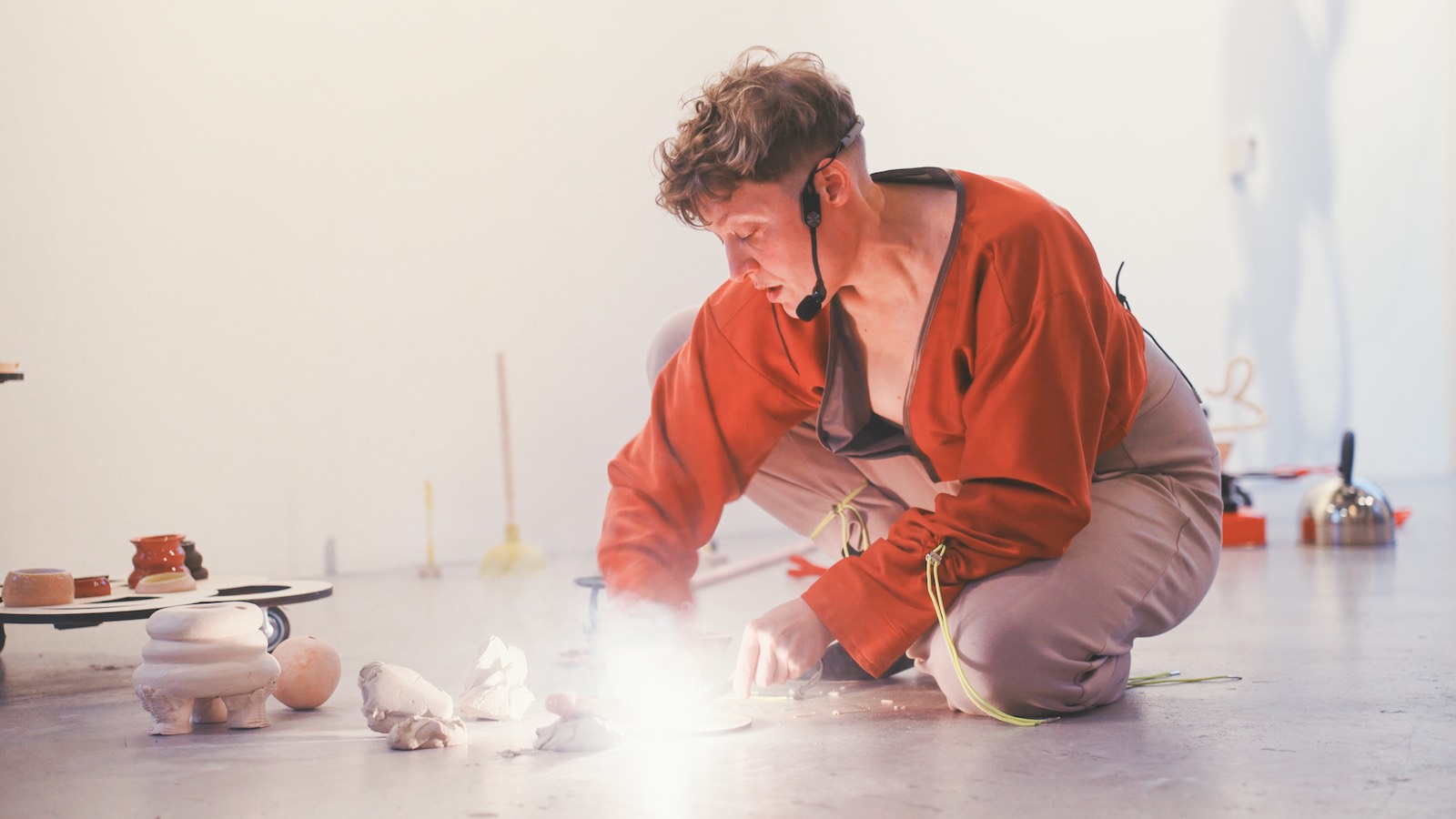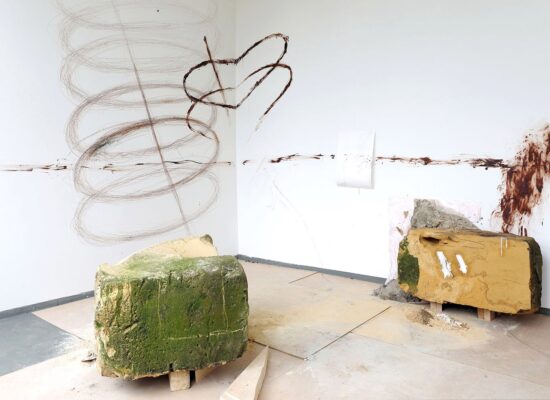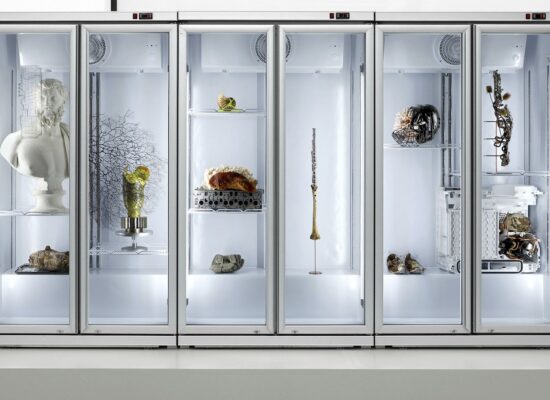How do you describe your own art practice?
My work is strongly informed by theater. The objects I make function as both sculptures and props, and likewise, the audience may become active participants – characters in a narrative that unfolds. I like to think of my installations as a stage: something may have happened or is about to happen – there is a sense of suspended potential. I am interested in the different temporalities of each work: the pace of a movement, the rhythm of a sound, the way it might change at night, or when I’m not looking. The objects and sculptures I craft are often linked to gestures, rhythms, and shared rituals, an element that manifests directly when I activate my work through performance.
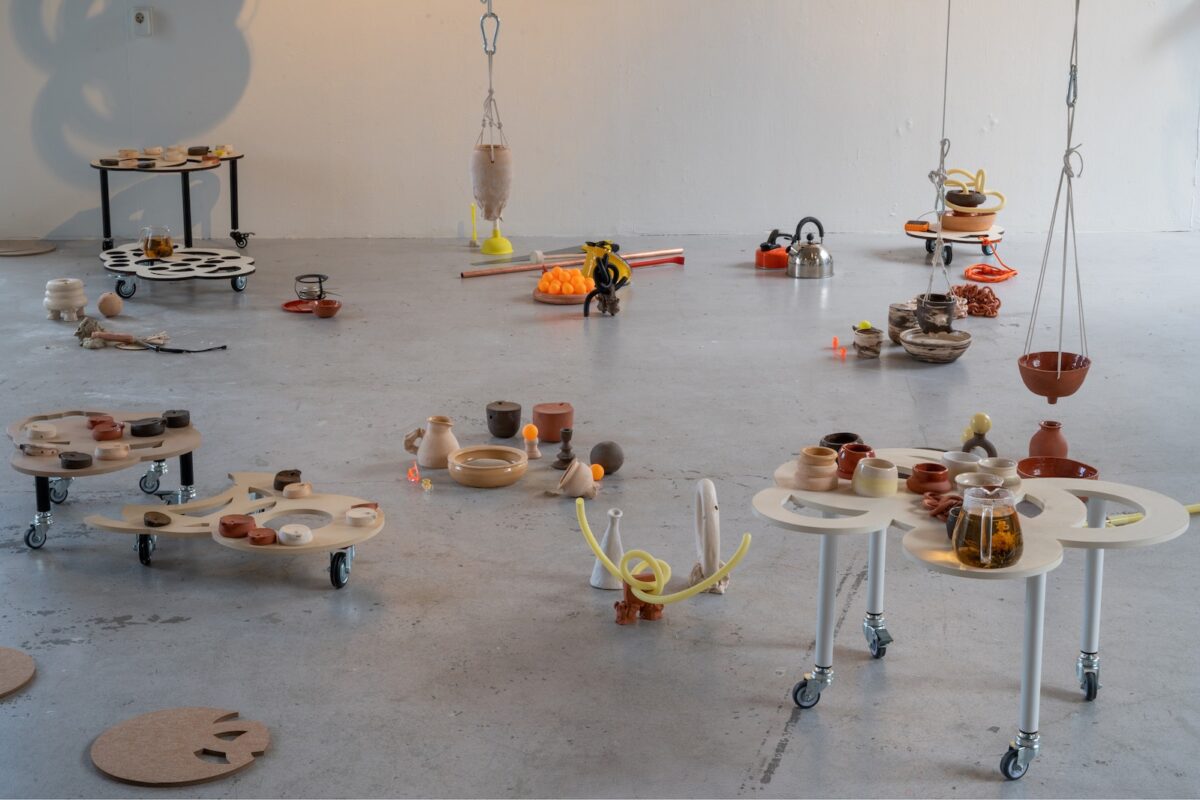
2024
Performance and Installation
NEVERNEVERLAND, 2025
Documentation: Joeri Bosma
Which question or theme is central in your work?
I’m interested in rituals as a form of world-making: establishing narratives and rules through ceremonial practices and crafting the tools needed for these.
Right now I’m working with wind instruments – especially horns – exploring breath as both a physical necessity and political force. In my performances, the instruments become extensions of the body. They’re deliberately unconventional, producing surprising, funny, or even unpleasant sounds. With this I question who gets to be a musician, performer, or composer – breaking down barriers around who is ‘allowed’ to participate. Recently I’ve begun to incorporate animal characters – cows, dogs, frogs, geese, spiders – tricksters in the worlds I create, mischievous beings, inspired directly by my rural upbringing. They remind me that I am merely a guest in spaces they’ve always inhabited.
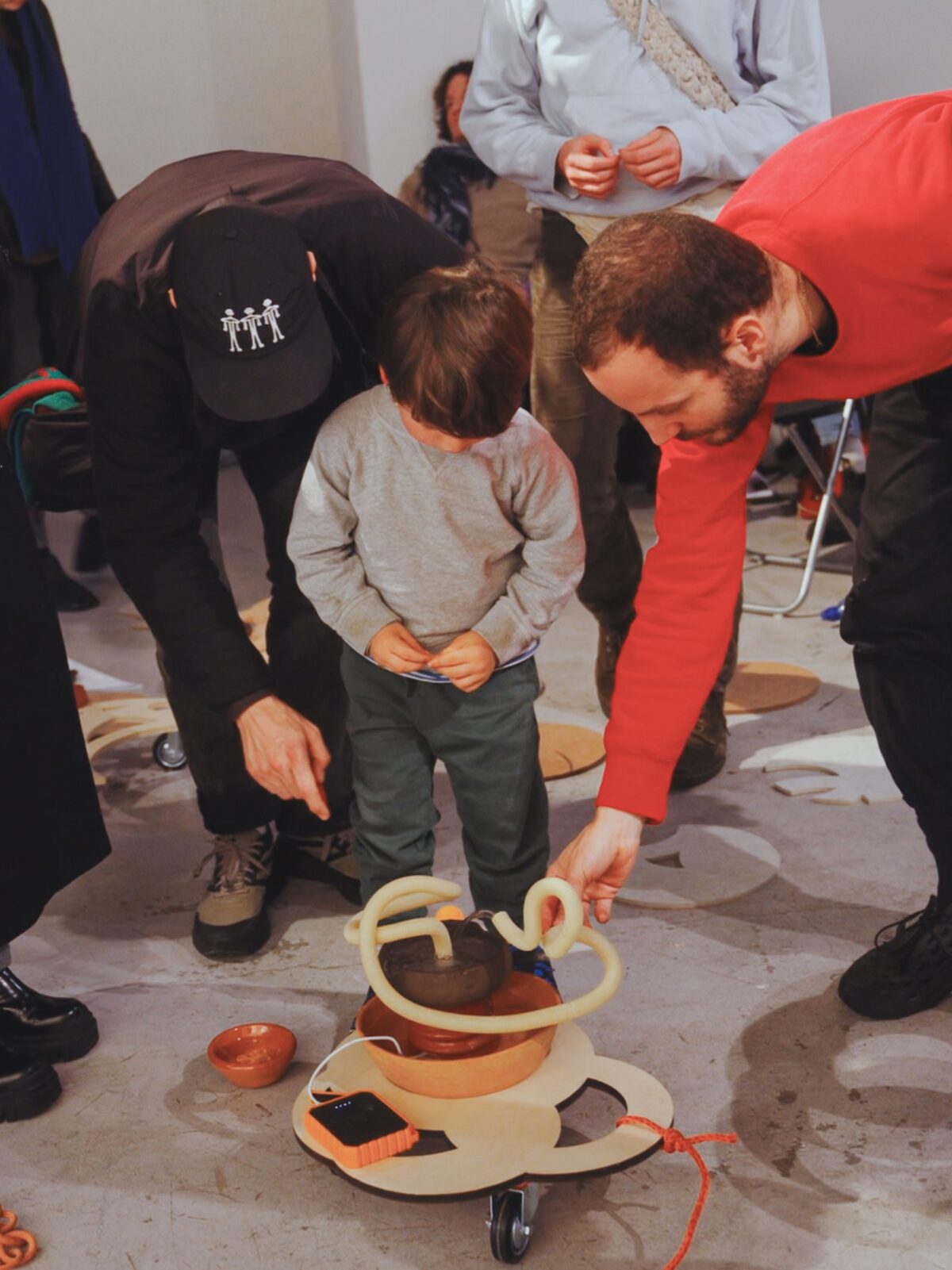
2024
Performance and Installation
NEVERNEVERLAND, 2025
Documentation: Gergely Ofner
What was your first experience with art?
I grew up in a theater family. My father, an opera singer, would bring props, backdrops, and costumes from productions he had been working with back home: fake swords, fake jewelry, a big red throne – we even had blue styrofoam horses in our garden. But I’m also a village kid. We lived in an agricultural area, and the contrast between the vast fields around me, the farm animals, the mud and dung, and the imagined worlds inside our house always intrigued me. When I was eight, my mom, a trained ballet dancer, started a ballet school, for which she began to collect costumes in our attic. I remember vividly the joy these would bring me, their textures and colors! The soft tulle, rich velvet, smooth satin, or stiff materials sprayed golden, emulating riches. Some things seemed so precious, so detailed and tactile, that just looking at them gave me pleasure.
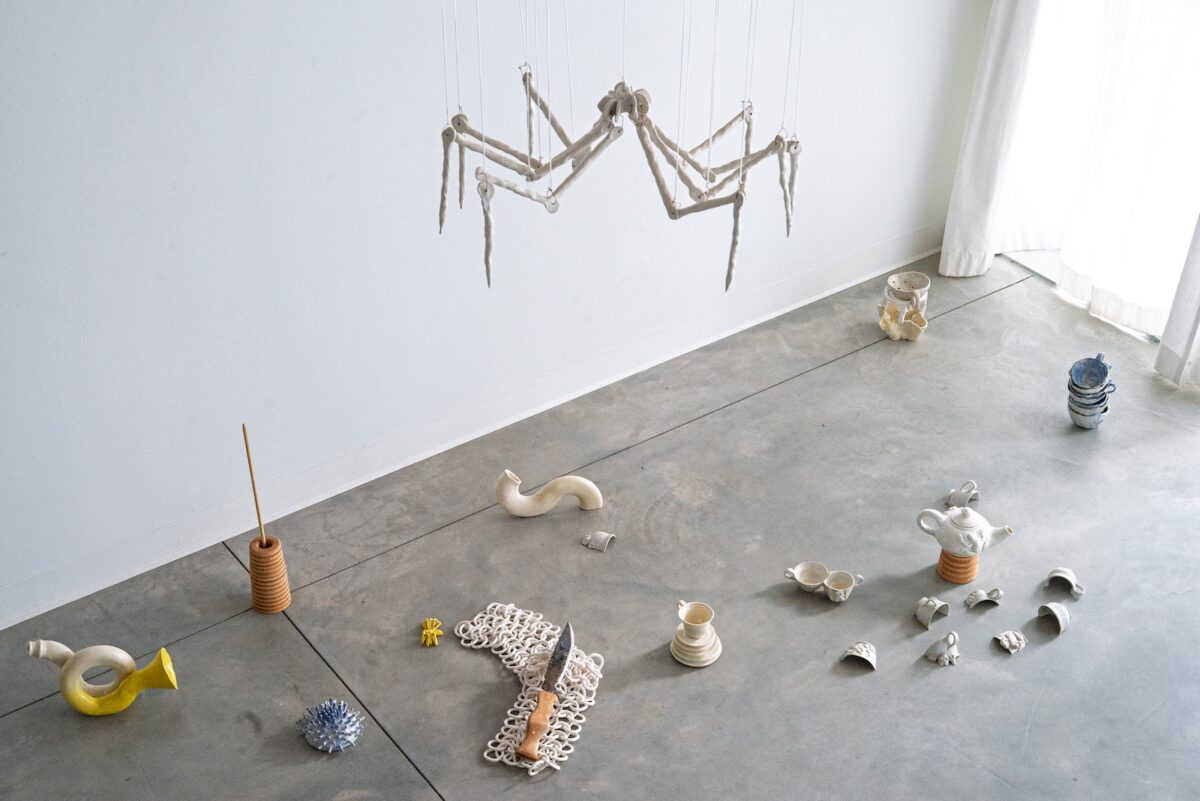
2025 (Work in progress)
Installation and sound piece
Developed during a residency at Est-Nord-Est, Quebec
What is your greatest source of inspiration?
Nature! Colors in landscapes blow my mind: the saturation of different greens, the thickness of the sky, the patterns in clouds. I love forests, ponds, dunes. I love the drama that unfolds when you sit quietly for a while. Courtship dances, territorial disputes, birds ranting from the trees, eyes staring from under water. Watching an insect laboriously transport a leaf fragment across impossible terrain is a perfect inspiration for a performative gesture. If you stay long enough, you get a sense of the funny personalities animals have, their relationships, and how completely unbothered they are by us when left alone.
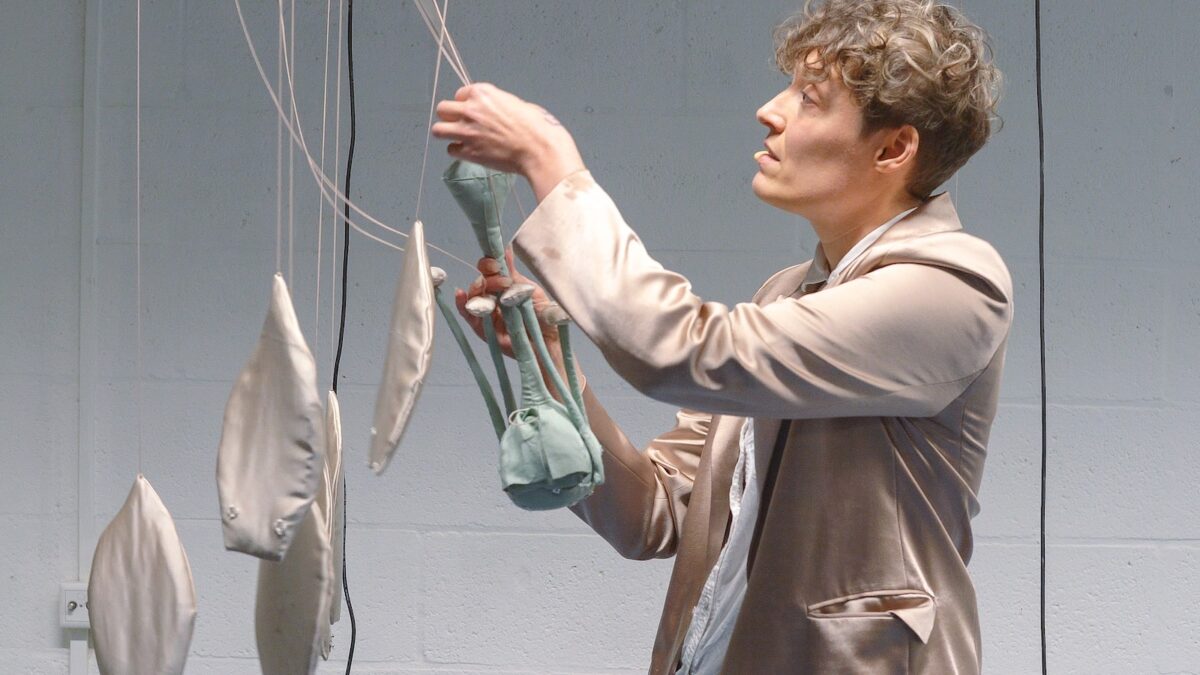
2023
Performance,
Presented at Personeelskamer, 2023
Documentation: Lea Novi
What do you need in order to create your work?
The simple things: space and time. I develop my work through iteration, and through formal and material experiments. This means – for better or worse – that I need access to a range of materials, space to experiment with them, and time to develop meaningful connections between them. And quite pragmatically, I need storage.
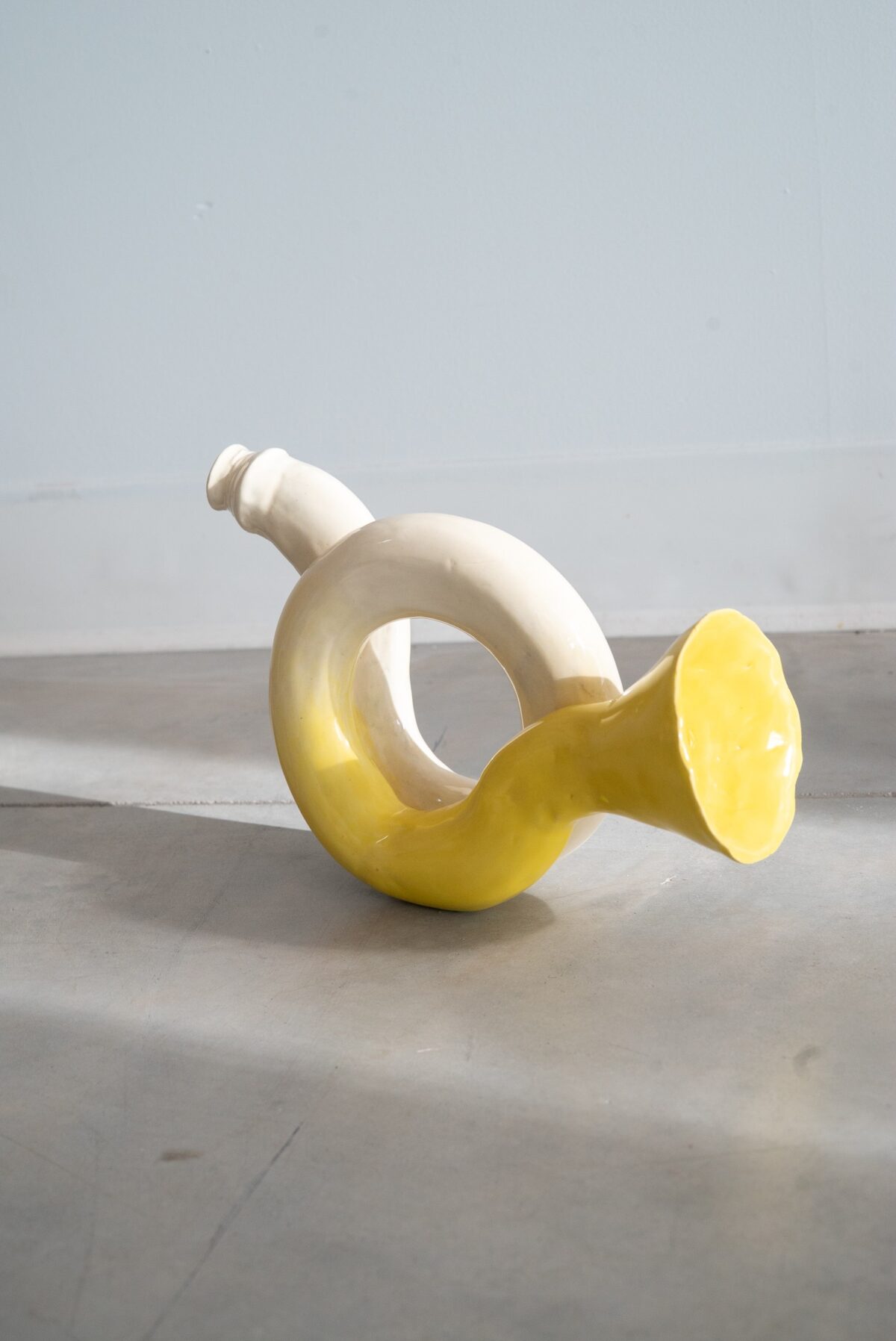
2025 (Work in progress)
Installation and sound piece
Developed during a residency at Est-Nord-Est, Quebec
What work or artist has most recently surprised you?
I absolutely loved “Camp Wakonda” by Graeme Patterson, a multimedia installation I recently saw at the Musée des beaux-arts in Montréal. Patterson built several miniature sets into bunk beds, and within these, animations, characters, and narratives came to life through projections of stop-motion films. Populated with animal-puppets from the Canadian landscape and people dressed as animals, it was crafted with an extraordinary attention to detail and layered with multiple interwoven stories. Unapologetically playful, nostalgic, and nerdy.
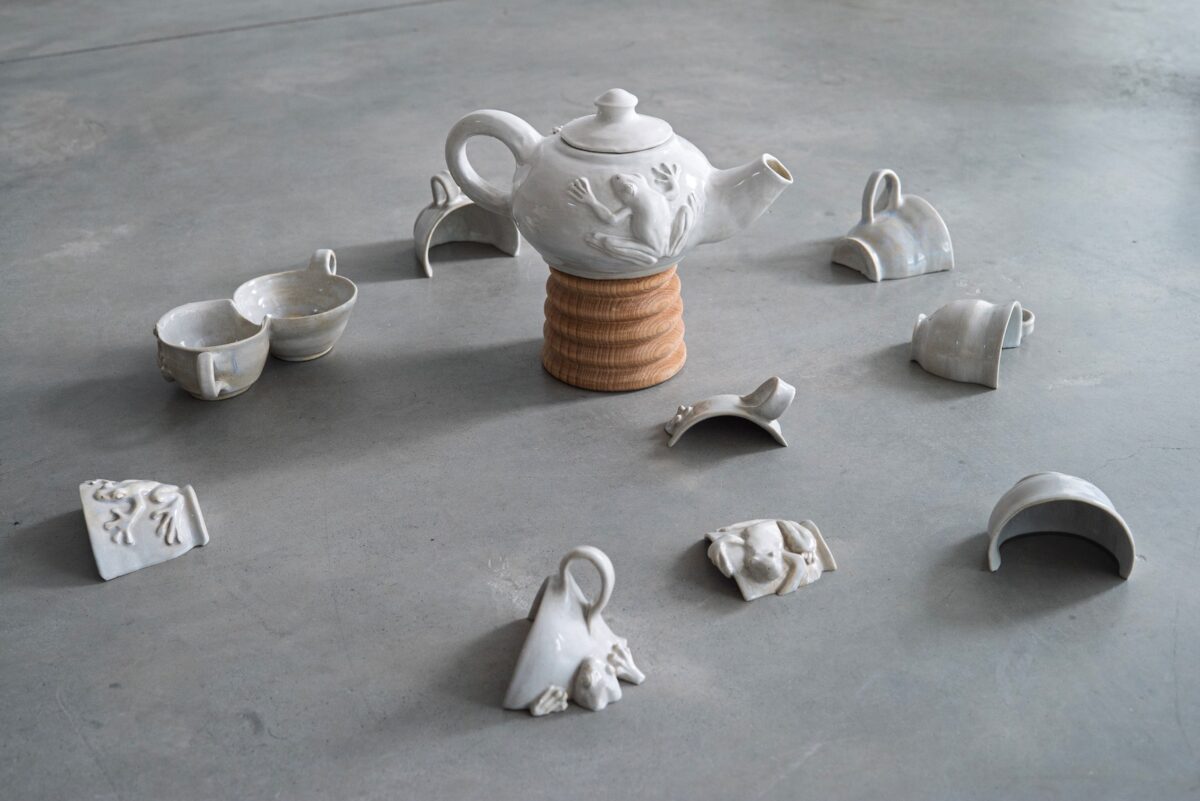
2025 (Work in progress)
Installation and sound piece
Developed during a residency at Est-Nord-Est, Quebec
